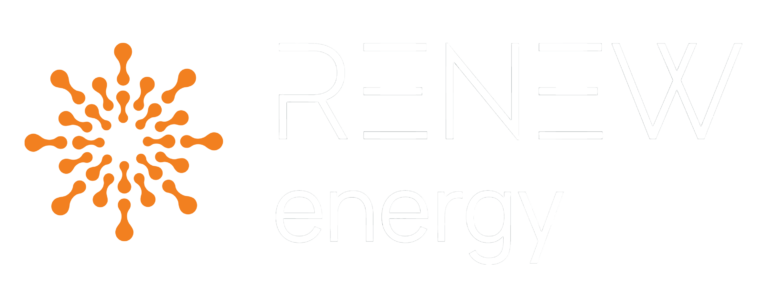Solar Energy
What is Solar Energy
When we refer to solar energy, we are referring to the utilization of sunlight (photons) and its conversion into electricity (voltage) using a phenomenon known as the “photovoltaic effect,” or PV. The solar energy harnessed through PV technology has the capability to supply power to a wide range of applications including residences, commercial establishments, vehicles, aircraft, as well as smaller devices like calculators, portable power stations, and more.
The sun stands as the most abundant energy source within our solar system, and its significance to our existence is immeasurable. Just how potent is the sun’s energy? According to the U.S. National Renewable Energy Laboratories (NREL), the amount of sunlight that strikes the Earth in just one hour possesses the potential to meet the global energy demands for an entire year. This exemplifies its extraordinary power.
Solar energy has consistently ranked among the fastest-growing energy sources worldwide for several years. As of 2020, the United States boasted an installed solar capacity of 97.7 gigawatts (GW), sufficient to power nearly 17.7 million households! This impressive growth is attributable to advancements in technology, more cost-effective materials, and heightened consumer interest, making solar power an economically viable option for homeowners, and promising long-term savings.
How does solar energy work?
When sunlight falls upon a solar panel, photovoltaic (PV) cells within the panel absorb the sun’s energy. This absorbed energy initiates the generation of electrical charges within the cell, prompting them to move in response to an internal electrical field, ultimately resulting in the flow of electricity. The electricity that is generated then travels from a solar array to an inverter. The inverter takes the electricity which is in Direct Current (DC) form and switches it to Alternating Current (AC) Power. Once the current is converted to AC, it is ready for household use. From the inverter, power is fed into the main electrical panel and can provide power to the household.
Solar panel Installation
Installation Guide for Solar Panels
Installing solar panels is a valuable investment that can reduce your energy bills and contribute to a more sustainable future. Proper installation is crucial for maximizing the efficiency and longevity of your solar system. Here’s a step-by-step guide on the solar panel installation process.
1. Design the Layout:
– Work with your solar energy representative to design the layout of the solar panels on your roof. Consider factors like shading, spacing, and positioning for optimal sunlight exposure.
2. Choose the Right Solar Panels:
– Select high-quality solar panels from a reputable manufacturer. Consider factors such as efficiency, warranty, and aesthetics.
3. Evaluate Your Roof:
– Assess the condition, angle, and orientation of your roof to determine if it is suitable for solar panel installation.
4. Find a Professional Installer:
– Hire a certified and experienced solar panel installer. They will have the expertise to handle the following during installation:
A. Obtain Necessary Permits:
– Check with your local authorities and obtain any required permits for solar panel installation. Regulations may vary by location.
B. Install Mounting Hardware:
– Attach the mounting hardware to your roof securely. Ensure it is weatherproof and can withstand environmental conditions.
C. Connect Wiring:
– Connect the solar panels using wiring and conduit. Ensure all electrical connections are properly sealed and insulated.
D. Install Inverters:
– Install inverters that convert the direct current (DC) generated by the panels into alternating current (AC) for use in your home.
E. Ground the System:
– Ground the solar panel system to protect against electrical faults and lightning strikes.
F. Perform Quality Checks:
– Inspect the entire system for proper installation, including wiring, mounts, and inverters.
5. Connect to the Grid:
– If you’re connecting to the grid, work with your utility company to complete the interconnection process. This may involve installing a bi-directional meter.
6. Test the System:
– Test the system to ensure it is generating electricity as expected. Monitor its performance regularly.
7. Obtain Inspections and Approvals:
– Schedule inspections with local authorities or your utility company to ensure compliance with safety and regulatory standards.
8. Monitor and Maintain:
– Regularly monitor your solar panel system’s performance. Clean the panels and check for debris that could reduce efficiency.
9. Enjoy the Benefits:
– Once your solar panel system is up and running, you can start enjoying reduced energy bills and the satisfaction of contributing to a cleaner environment.
How much does solar energy cost?
The cost of solar energy varies from state to state and between commercial and residential applications. Several factors contribute to this including the cost of energy where you live, the amount of electricity you consume, and more importantly, how much sunlight you receive. The amount of sunlight you receive has a direct impact on the number of solar panels you will need to install in order to offset your typical electricity usage.
Here are some common factors that impact the overall cost of a solar system:
Product: There are many different brands of solar panels on the market that vary in price depending on the efficiency they offer. Ensure you are working with a solar provider that utilizes top rated solar panels that maximize the amount of usable energy each panel can produce.
Size of System: The amount of electricity you consume along with the sunlight your home receives will have a direct impact on the number of solar panels that will be required to offset your electricity usage. Logically, a larger system with more solar panels will cost more than a smaller system.
Installation Requirements: The type of system you install can have an impact on the overall cost of the system. For example, if you have a ground mount system in lieu of a rooftop mounted system, there may be extra costs associated with digging trenches to hide the wiring and building a custom mount to attach the solar panels to.
Location: Depending on the state you are installing solar in, there can be additional permitting fees and processes that need to take place when comparing one state to another.
Additional Factors: Net Metering laws in different states can have an impact on the overall cost of a solar system. For example, California has changed their Net Metering laws to heavily incentivize the inclusion of a backup battery system to be added in parallel with solar panels.
Other factors including, but not limited to, local labor costs, system add-ons, and condition of your electrical panel can all have an impact on the overall cost of your system.
Governments at all levels have taken notice of the renewable energy trends and are actively supporting solar energy adoption. They offer local and federal tax incentives and rebates to encourage homes and businesses to embrace solar power. A prime example is the federal solar tax credit, also known as the investment tax credit (ITC), which can slash the cost of a commercial or residential solar energy system by up to 30%.
Commercial Solar vs. Residential Solar
1. Scale of Installation:
– Commercial Solar: Commercial solar installations are designed to meet the energy needs of businesses, industries, and large organizations. They typically involve larger systems with higher energy production capacity.
-Residential Solar: Residential solar installations are intended for individual homes or small residential complexes. They are typically smaller in scale compared to commercial systems.
2. Purpose:
– Commercial Solar: The primary purpose of commercial solar installations is to offset a significant portion of a business or organization’s energy consumption, reduce operating costs, and often achieve sustainability goals.
– Residential Solar: Residential solar systems are installed to provide clean and cost-effective energy for homeowners. They aim to reduce or eliminate monthly electricity bills and offer environmental benefits.
3. System Size:
– Commercial Solar: Commercial solar systems are larger and can range from several kilowatts to several megawatts in capacity, depending on the energy needs of the business.
– Residential Solar: Residential solar systems are smaller and typically range from 3 kW to 20 kW in capacity, designed to meet the energy demands of a single household.
4. Roof Space:
– Commercial Solar: Commercial buildings often have larger roof spaces or open areas available for solar panel installation, making it feasible to accommodate larger arrays.
– Residential Solar: Residential installations need to fit within the available roof space or property, which can limit the size of the solar array.
5. Financing and Ownership:
– Commercial Solar: Commercial solar projects may be financed through various models, including power purchase agreements (PPAs) or solar leases. They can also be owned outright by the business.
– Residential Solar: Homeowners typically have the option to purchase solar panels outright, finance them through loans, or lease them from solar providers.
6. Regulatory Considerations:
– Commercial Solar: Commercial solar installations may have to navigate complex permitting and regulatory requirements, which can vary by location and project size.
– Residential Solar: Residential solar installations often have simplified permitting processes, making it easier for homeowners to go solar.
7. Return on Investment (ROI):
– Commercial Solar: Businesses invest in commercial solar systems to achieve long-term financial benefits, such as reduced energy costs and potential revenue from excess energy generation.
– Residential Solar: Homeowners invest in residential solar primarily to reduce electricity bills and increase the value of their homes. ROI is typically achieved over several years.
8. Installation and Maintenance:
– Commercial Solar: Commercial installations may require more complex engineering and professional maintenance services due to their size and complexity.
– Residential Solar: Residential installations are generally less complex, with easier installation and maintenance requirements, often manageable by local solar installers.
In summary, the key differences between commercial and residential solar installations lie in their scale, purpose, size, financing, regulatory considerations, and return on investment. Both types of solar systems offer energy cost savings and environmental benefits but cater to distinct energy needs and contexts.







